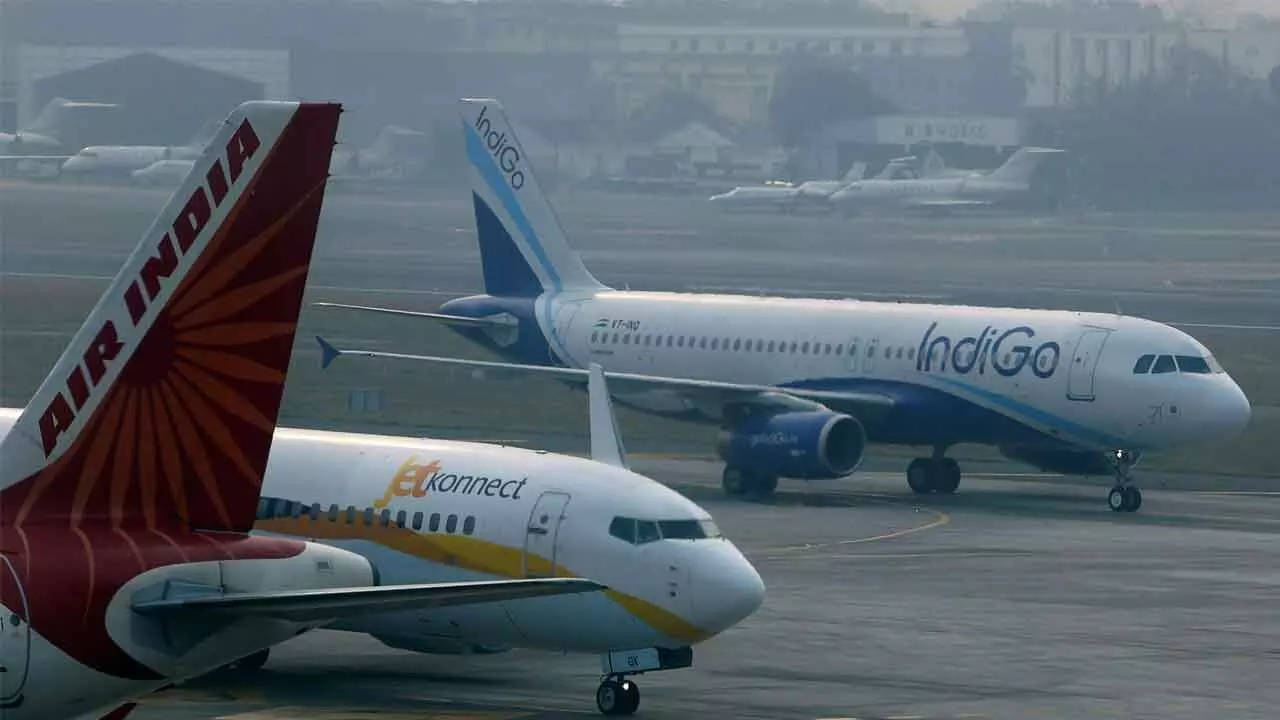Will passengers ride the tide as domestic air fares continue to rise?
As of April, only 30.8 per cent of the 1,083 routes were serviced by more than one airline
image for illustrative purpose

Now that the competition in the market has reduced, carriers are prioritising profit and focusing their efforts on achieving higher yields in the form of average revenue per passenger per kilometre
It is a widely known fact that Indian airlines are confronted with supply chain problems and engine failures. To support the rising demand, airlines in the country have ordered about 1,700 planes, more than twice its current fleet.
ICRA expects deliveries to slow over the next decade due to these supply chain issues and aircraft manufacturers. Now combine this with India’s booming aviation market at an average of 4.71 lakh domestic passengers every day, up 14 per cent from the pre-Covid count of 3.98 lakh passengers.
The competition on domestic flight routes is decreasing and this has resulted in a rise in air fares. This decline in competition for air routes is being considered the main reason why airlines are increasing their fares aggressively.
Another major reason for the increase in fares is User Development Fee (UDF). This is the you pay to use the airport's facilities. Airports claim they require this funding to cover costs and improve infrastructure.
For instance, passengers boarding a domestic trip from Patna airport now pay ₹660 as UDF, up 223 per cent from FY24. Even metro airports like Bengaluru and Hyderabad haven't been shy, with increases ranging from seven per cent to 22 per cent during the same period.
A report by Cirium, an aviation analytics firm, found that 69.2 per cent of domestic routes logged lesser competition in April 2024, as compared to 55.2 per cent clocked in April 2019. This showed that the number of flight routes with declining competition increased during the last five years.
As of April 2024, the study found that only 30.8 per cent of the 1,083 routes were serviced by more than one airline. This fall in competition has resulted in a major hike in the prices of flights, especially after the Covid-19 pandemic.
With IndiGo and Air India dominating 90 per cent of domestic travel, competition is thinned out. Airfares on certain internal routes have climbed up to three times in the previous year due to a lack of competition, with just one or two airlines flying on certain routes with a limited number of flights.
For example, between April and November 2023, costs for nonstop flights between Srinagar and Leh increased by more than 229 per cent, compared to a national average increase of 21 per cent. Similarly, IndiGo is the only airline that provides nonstop flights from Jaipur to Goa, resulting in a 135 per cent spike in prices from April to November. Other routes, including Srinagar-Chandigarh and Dehradun-Mumbai, have experienced fare rises of 113 per cent and 57 per cent, respectively.
The study also showed that the Delhi-Mumbai air route, for instance, saw average flight prices reduce by 20.5 per cent during the April 2019 to April 2023 period. However, on the same route, these fares climbed higher by 34.6 per cent last year. Meanwhile, the air route between Delhi and Bengaluru has witnessed a 53.1 per cent surge in average fares for economy class in the last one year.
Now that the competition in the market has reduced, carriers are prioritising profit and focusing their efforts on achieving higher yields in the form of average revenue per passenger per kilometre. This has shifted the focus from providing lower airfares to passengers.
India still has some of the world's cheapest air travel options. According to Cirium, India had the lowest average domestic airfare among significant markets by 2023. For a distance of 622 miles, the one-way average economy class fare in India was just $80. Compare this to $167 for 768 miles in Australia, $180 for 1,108 miles in the US, or $106 for 813 miles in Europe.
The challenge is to maintain this balance between affordability and the industry's financial health as the sector evolves.
A Tariff Monitoring Unit (TMU) was set up by the Directorate General of Civil Aviation (DGCA) to keep an eye on airfares on major domestic routes. The TMU checks the websites of planes once a month to make sure that the prices that are being charged are within the stated range.
India's airline industry is at a turning point. It's hard to find a good balance between growth, cost and making money. So, the next time you book a flight and see that it costs more, remember that you're not just buying a seat; you're also helping the growth of the country’s airport system.

